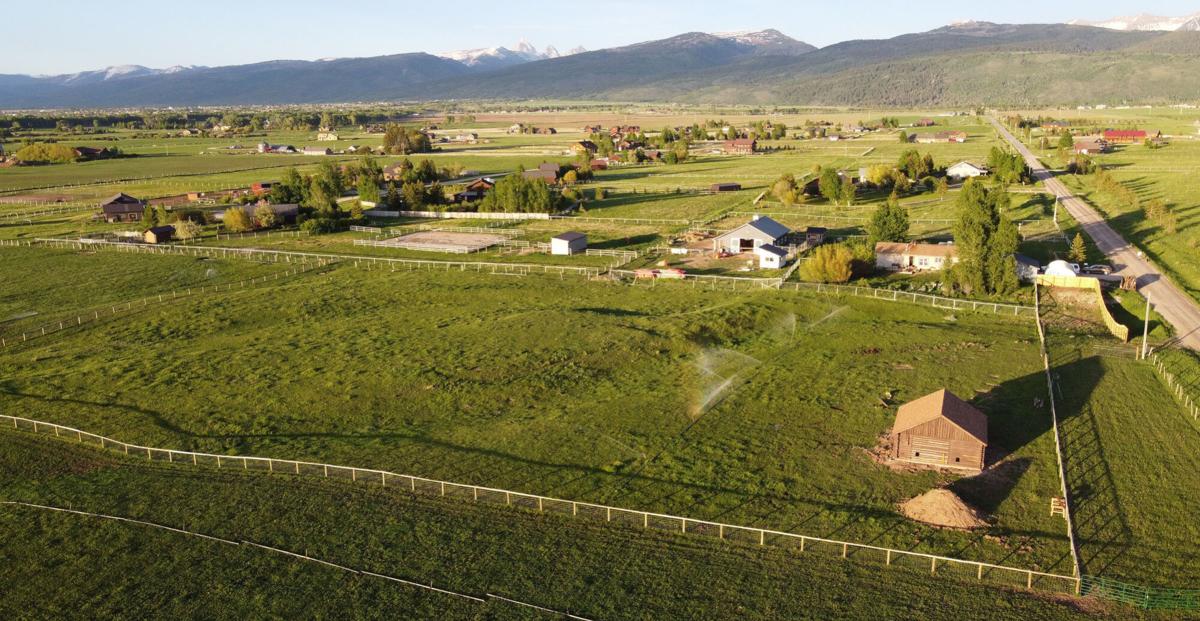After returning to the carrier, both the F-14s received single FLOGGER ‘kill’ markings above the nose MODEX, although these were removed by the time the jets returned to Oceana on Jan. 31
Jan. 4, 1989 was a historic day for VF-32, and the Tomcat community as a whole, when the F-14 once again entered into aerial combat, and again with the Libyan Arab Air Force (LAAF). As John F. Kennedy steamed eastwards for a portcall in Israel, four F-14As were on combat air patrol (CAP) as the ship passed the Gulf of Sidra. As explained by Mike Crutch in his book CVW: US Navy Carrier Air Wing Aircraft 1975-2015, Callsigns CAMELOT 100 and 101 (BuNos 162700 and 162691) of VF-14 were flying the western CAP, while to the east were VF-32 F-14As GYPSY 202 (BuNo 159437, flown by LT Hermon Cook and RIO LCDR Stephen Collins) and GYPSY 207 (BuNo 159610, piloted by the squadron CO CDR Joseph Connelly with ‘guest’ RIO CDR Leo Enright from the CVW-3 staff).

The on station E-2C Hawkeye of VAW-126 (callsign CLOSEOUT) detected two streamed pairs of Libyan fighters launching from the base at Al Bumbah, with GYPSY 207 subsequently leading the intercept as Enright identified them on his own radar at a bearing of 175 degrees, range 72 nautical miles, flying at 10,000 feet. As the Libyan fighters – what were soon confirmed on the Tomcats’ TCS screens as being fully armed Libyan MiG-23 FLOGGERs – continued north, the F-14s went through a series of manoeuvres to offset the MiGs, which would then re-position a number of times to achieve a head on, forward quarter missile firing solution thus confirming hostile intent – and satisfying U.S. Rules of Engagement for the F-14s to engage. To achieve a better radar lock and to remove ‘clutter’ from the ocean below, both Tomcats descended below the MiGs’ altitude – eventually down to 3,000 feet – as they converged.
The trailing pair of FLOGGERs tracked northwest, presumably intent on engaging the VF-14 Tomcats (although nothing transpired), while the lead pair continued towards the VF-32 aircraft. At some 35 nautical miles separating them, the Kennedy Battle Group commander broadcast the approval to fire in self defence, that call coming shortly before the lead MiG turned into GYPSY 207 for a sixth time and closing inside 20 miles. At twelve then ten miles range, GYPSY 207 expended single AIM-7 Sparrows against the first FLOGGER which both failed to lock onto their target. Next GYPSY 202 had more success, taking out a MiG-23 with an AIM-7 at a range of five miles. GYPSY 207 now switched to an AIM-9 Sidewinder at one mile and achieved a direct hit on the remaining FLOGGER. After returning to the carrier, both aircraft received single FLOGGER ‘kill’ markings above the nose MODEX, although these were removed by the time the jets returned to Oceana on Jan. 31; Kennedy docked at Norfolk the following day. The CO’s aircraft GYPSY 201 (BuNo 162694) did, however, return to Oceana with Libyan flags painted next to the names (of Connelly and Collins – leading some authors to later believe they were in the same aircraft during the actual engagement) on the canopy rail. As details of the engagement were gradually declassified, double MiG-23 silhouettes were added on the full colour schemes applied to both CAG and CO birds at the end of 1989.

applied to one of the F-14As involved in the MiG-23
engagement on 4 January 1989, though removed before
returning to the USA. Here, BuNo 159437 proudly wears her
marking above the MODEX and was seen for a fraction of a
second in the 1989 Fighter Fling video produced for that year’s
Tomcat Ball at Oceana (USN/FITWINGONE)
Below is the transcript from the engagement (along with the dogfight footage). As told by Craig Brown in his book Debrief: a complete history of U.S. aerial engagements 1981 to the present, inter-cockpit communications are annotated, otherwise all transcribed communications are actual radio transmissions. Here is the cast of characters:
207 Pilot — Lead pilot
207 RIO — Lead RIO
202 Pilot — Dash-2 (or wingman) pilot,
call-sign “Munster”
202 RIO — Dash-2 RIO
CLOSEOUT — E-2C Hawkeye
ALPHA BRAVO — Battle Group Commander aboard
JOHN F. KENNEDY
Tape begins.
207 RIO- “GYPSY 207 contact at 175, 72
miles, looks like a flight of two, Angels 10.”
CLOSEOUT- “Closeout concurs, showing
78 miles.”
202 RIO- (inter-cockpit) “Throttle
back just a little bit here.”
CLOSEOUT- “Closeout shows 25 mile
separation for an inbound”
207 RIO- “Contacts appear to be
heading, ah, 315 now, speed 430, Angels approximately 8,000.”
CLOSEOUT- “Roger ACE, take it north.”
(ACE was the call-sign for USS Kennedy A-6 Intruder aircraft)
207 Pilot- (inter-cockpit) “Looks like
we’ll have to make a quick loop here.”
202 RIO- “Come starboard, ah, I need
to give ya collision here. Yeah, come starboard about 40.”
(The MiGs are south of the Tomcats for 72
miles heading 315 degrees (northwest) at 8000 feet. The F-14s turn right about
40 degrees to create cut-off.)
207 RIO- “207 ah, 61 miles now,
bearing 180, Angels 8. heading 330.”
207 RIO- “Steady up.”
CLOSEOUT- “Alpha Bravo this is
Closeout.”
207 RIO- “Come back port, ah, 20
degrees here, he’s jinkin’ (or turning hard) now.”
207 RIO- “Bogies appear to be coming,
ah, jinking to the right now, heading north, speed 430, ah, angels 5,000 now in
the descent. So lets take her down now, we’re gain’ down.”
202 Pilot- “Concur.”
207 RIO- “Closeout, 53 miles now.
Bogies appear to be heading directly at us. I’m coming towards. Steady up 150
for 33 offset, 50 miles, 49 miles now, speed 450, Angels 9, I’m goin’ down to
3.”
(The look-down capability of the MiGs radar
and weapons is nowhere near as good as the F-14’s, hence, the Tomcats wanted to
get below the MiGs altitude.)
202 Pilot- “I am crossing back
over”
207 Pilot- “Roger.”
207 RIO- “Roger that, 30 degree offset
now. Bogies heading 340, speed 500, let’s accelerate.”
207 Pilot- “Okay, it looks like they
are at 9,000 feet now.”
207 RIO- “Roger, bogies have jinked
back into us now, now lets come starboard 30 degrees the other side.”
202 Pilot- “Coming starboard, say
their Angels.”
– “(unintelligible) VF-14 Camelot
aircraft setting up station.”
207 RIO- “Roger, Angels now 11, steady
up.”
ALPHA BRAVO- “Closeout, ah, Warning
yellow, weapons hold, repeat, warning yellow, weapons hold. Alpha Bravo
out.”
CLOSEOUT- “Roger, Gypsies, passing up,
Alpha Bravo directs warning yellow, weapons hold.”

207 Pilot- “35 miles here.”
207 RIO- “Roger that. Bogies have
jinked back into me now for the third time. Noses is on at 35 miles, Angels
7”
CLOSEOUT- “Alpha Bravo, Closeout, did you
copy?”
207 RIO- “Okay, I am taking another
offset, starboard, starboard. ah, 210.”
202 RIO- “The guy, I’m locked up here
30 miles, Angels 13,000, he’s the trailer”
207 RIO- “Roger that, level off here,
bogie jinked back into me for the 4th time. I’m coming back starboard. I’m back
port now. Port 27 miles, bogie is at 7,000 feet.”
207 Pilot- “We’re at 5.”
Camelot CAP- “(garbled) bogies 135-50,
Angels 16, heading 340.”
Unknown- “Okay.”
CLOSEOUT- “Roger, same bogies.”
207 Pilot- “Okay, you’re in collision now,
steering.”
207 RIO- “Okay, bogies have jinked
back at me again for the fifth time. They’re on my nose now. Inside of 20
miles”
(207 internal comms – Radar altimeter tone
sounds at passing preset altitude of 5000 ft MSL.)
207 RIO- “Master arm on, master arm
on”
202 Pilot- “Okay, good light”
207 Pilot- “Good Light”
207 RIO- “Okay. centering up the T,
bogie has jinked back into me again, 16 miles, center of the dot.”
202 Pilot- “Say your Angels.”

207 RIO- “I’m at Angels 5, nose up.”
202 Pilot- “No, his Angels.”
207 Pilot- (inter-cockpit) “Now, wait
a minute.”
207 RIO- “Angels are at 9!”
207 Pilot- “Alpha Bravo from
207.”
207 RIO- “13 miles. Fox 1! Fox
1!”
207 Pilot- (inter-cockpit) “Ah
Jesus!”
202 Pilot- “Jinking right.”
207 RIO- “Roger that, 10 miles, he’s back
on my nose. Fox 1 again!”
207 Pilot- “Watching ’em up.”
207 RIO- “6 miles, 6 miles.”
202 Pilot- “Tally 2, Tally 2! Turning
into me.”
207 RIO- “Roger that, 5 miles… 4 miles.”
207 Pilot- “Okay, he’s got a missile
off.” (207’s pilot sees his wingman firing an AIM-7.)
202 Pilot- “Breakin’ right.”
207 Pilot- “Good hit, good hit on
one!” (This is 202’s AIM-7 hitting the first MiG-23.)
207 RIO- “Roger that, good kill, good
kill!”
207 Pilot- “I’ve got the other
one.”

207 RIO- “Select Fox 2, select Fox
2!!”
207 Pilot- “I’ve got Fox 2.”
Garbled- ” …the trailer.”
202 Pilot- `Comin’ hard starboard.”
202 Pilot- “…f**kin’!”
207 RIO- “Shoot him!”
207 Pilot- “I don’t got a tone.”
202 Pilot- “I’ve got the second one.”
207 Pilot- “I’ve got the second one on
my nose right now.”
202 Pilot- “Okay, I am high cover on
you.”
207 Pilot- “Get a Fox, get a, lock him
up! Lock him up.”
207 RIO- “There! Shoot him, Fox
2!”
207 Pilot- “I can’t! I don’t have a
f’” ,king tone!”
207 Pilot- “Tone’s up!”
– (AIM-9 Sidewinder lock-on tone heard on
inter-cockpit comms)
207 Pilot- “Fox 2.”
207 Pilot- “Good kill! Good
kill!”
202 Pilot- “Okay. good kill.”
207 RIO- “Pilot ejected.”
Garbled- “The pilot’s ejected out of
the second one.”
207 Pilot- “Okay ‘Munster; let’s head
north, head north.”
202 Pilot- “Okay. Port side high.
comin’ down hard.”
207 RIO- “Roger.”
207 RIO- “Roger that. Let’s revert.
Blow in’ north, let’s go down low, on the deck, unload, 500 knots, let’s get
out of here.”
202 Pilot- “Okay. two good chutes.”
202 RIO- “We’re showin’ two good chutes in
the air here, from ‘Munster.’”
207 RIO- “Roger that. I see the, ah–.”
207 Pilot- “I’ve got the splash. one
splash.”
207 RIO- “One splash.”
207 Pilot- “Take that down to, ah, 3.000 here ‘Munster.’”
202 Pilot- “The, ah, splash 160 at 96.”
207 RIO- “Let’s go. ‘Munster.’ down to
3,000 and let’s get outta here.”
202 Pilot- “Running North, on your
right side”
207 Pilot- “Roger. the other chute is
high up, just to the right of the first splash….”
Tape ends.
Debrief: a complete history of U.S. aerial engagements 1981 to the present is published by Schiffer Publishing and is available to order here.
Photo credit: LCdr. Parsons / U.S. Navy
Artwork courtesy of AircraftProfilePrints.com























